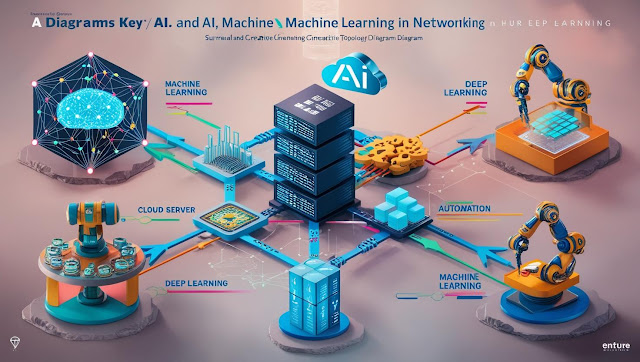Introduction to AI Networking
Table of Contents
- Overview of AI Networking
- Importance of AI in Networking and its Role in Enhancing Network Performance
- Key Concepts of AI and Machine Learning in the Context of Networking
Overview of AI Networking
AI is being utilized in various network technologies, including Software-Defined Networking (SDN), 5G, IoT, and cloud computing, to enhance real-time decision-making, scalability, and overall performance.
Importance of AI in Networking and its Role in Enhancing Network Performance
The growing demand for higher network performance and reliability requires more advanced solutions. AI plays a pivotal role in meeting these needs by offering:
- Traffic Management: AI algorithms can analyze network traffic patterns and predict potential congestion or bottlenecks, helping to reroute traffic dynamically for improved network efficiency.
- Predictive Analytics: By using machine learning, AI can predict network failures or issues before they occur, minimizing downtime and improving service reliability.
- Network Automation: AI-powered systems can automate tasks such as network configuration, maintenance, and fault detection, reducing human error and the time required for manual intervention.
- Scalability: AI can help networks scale by adapting resources based on demand in real-time, ensuring optimal network performance even as data volumes grow.
With AI in networking, networks can intelligently respond to fluctuations in traffic, optimize resource allocation, and improve both performance and security.
Key Concepts of AI and Machine Learning in the Context of Networking
Understanding AI and machine learning in the context of networking is crucial for realizing their potential:
- Machine Learning (ML): In networking, ML algorithms analyze network data to learn patterns and behaviors. This allows for smarter decision-making, such as predicting traffic loads, detecting network anomalies, or optimizing routing decisions.
- Artificial Intelligence (AI): AI in networking uses a combination of ML, data analytics, and automation to enable self-healing networks, improve security protocols, and enhance overall network management. AI systems can adapt to new conditions and improve over time, reducing the need for human intervention.
- Automation: AI enables networks to automate routine tasks like provisioning, monitoring, and diagnostics, which traditionally required human effort. For example, AI can automatically detect network anomalies and respond without manual input, speeding up troubleshooting and resolution.
- Deep Learning: This subset of machine learning involves neural networks that can analyze large, complex datasets, which can be valuable for advanced use cases like predicting network failures or optimizing traffic routing with more precision.
In summary, AI and machine learning have revolutionized networking by providing advanced tools for improving performance, security, and automation, while also making networks more adaptable to changing demands.



